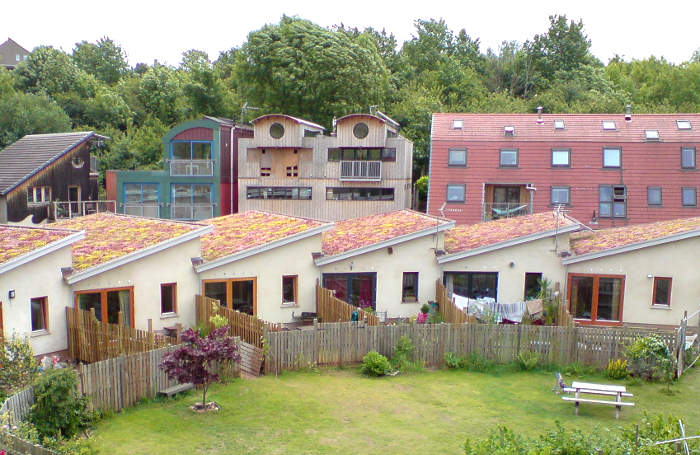The community-led housing sector is one of the fastest growing areas of housing development in England. The number of community-led homes in development has tripled in the last two years to around 16,000, according to data gathered by Homes England.
There is a whole infrastructure of enabling groups and free guidance that architects can tap into for information about community-led developments. The best place to start is Community Led Homes, which launched earlier this year.
A valuable resource, it supports and delivers the government-funded Enabler Hub Grant Programme. Enabler Hubs are regional organisations offering advice and support to community-led housing groups. There is a hub finder that also lists enabler organisations that are not formally classed as 'hubs'.
Jackson Moulding of Bristol-based community housing enabler Ecomotive is an inspiring advocate of self-build, custom-build and community-led housing. He suggests that the first step for architects looking to get involved in community-led development is to contact their local Enabler Hub. In areas without a hub, they could contact Community Led Homes directly or its partner organisations.
An Enabler Hub can explore match-making opportunities with a community group, and then help with grant funding for masterplanning or a feasibility study. A community group could establish a Community Land Trust (CLT) to formally place a site into community ownership.
There are more than 300 CLTs already incorporated in England, although not all are housing-focused. As a collective, a CLT will probably appoint directors, who might have a wide membership with a broad range of skills and contacts: a local doctor, or a member of the local housing association or parish council, for example.
Jackson Moulding says that all of the most successful community-led housing groups he has known have had an architect on board as a stakeholder of some kind, as a member of the board or steering group. Like fellow group members, an architect might be seeking to build a home or office of their own from the process.

A strong motivating factor in setting up a CLT is to give residents design input. This ranges from how outside space is used and the way the buildings are built, right up to direct involvement in construction. That could be light-touch, such as simple self-finish options or a purist self-build model in which the CLT just make plots available. Ecomotive have developed an app that can be used to track the ‘sweat equity’ of a member’s construction input.
Moulding suggests that a CLT often has a better understanding, and more of a vested interest, in the immediate local area’s needs than a Housing Association would. A CLT is an excellent way to approach redevelopment of a community pub or a village green, for example. Affordable housing is one area of development that land trusts have often delivered successively. For Moulding, the main appeal of CLT is that it gives control of delivery and ownership to a community.
One challenge currently facing the community-led housing movement is that the government’s Community Housing Fund (CHF) programme, which is credited with having stimulated demand so successfully, is due to end prematurely in March 2020. The window for new applications closes at the end of December 2019.
Community housing groups have been warning that this that will leave thousands of pipeline projects potentially in limbo without further enabling grants. There are alternative sources of grant funding, but the CHF has made things much simpler for community groups.
Moulding says that housing groups remain hopeful that grant funding will be continued by the new government, he suggests, largely because community housing policies enjoy cross-party support.
In London, there is no immediate threat to grant funding. A £38m fund for community-led housing launched by London mayor Sadiq Khan has its own timetable and will run until March 2023.
The National CLT Network has been campaigning for a £500m CHF over the next five years to ensure that pipeline projects move into construction. It says that all eyes will be on the new government and hopes that a replacement for the CHF can be put into place in time to continue community-led housing’s burgeoning growth.
Thanks to Jackson Moulding, Director of Ecomotive.
Text by Neal Morris. This is a Professional Feature edited by the RIBA Practice team. Send us your feedback and ideas
RIBA Core Curriculum Topic: Architecture for social purpose.
As part of the flexible RIBA CPD programme, Professional Features count as microlearning. See further information on the updated RIBA CPD Core Curriculum and on fulfilling your CPD requirements as an RIBA Chartered Member.









